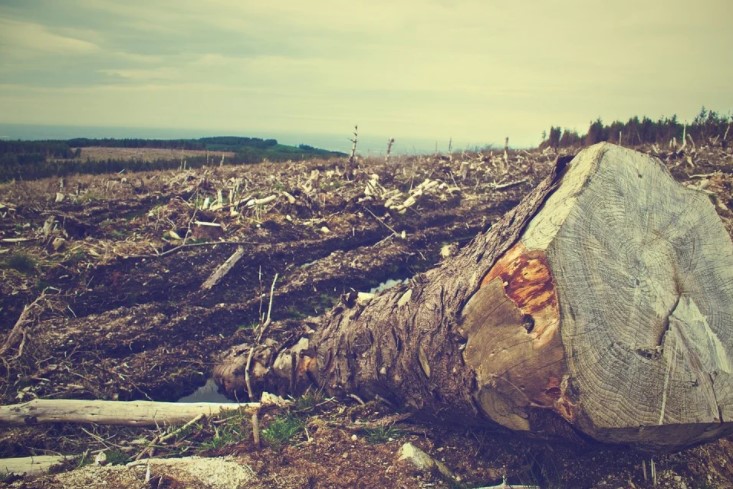Deforestation
Contents |
[edit] Introduction
Deforestation can be defined as the permanent removal of woodland areas and forest vegetation in order to repurpose the land. It is also sometimes referred to as forest clearance.
There are instances when the extraction of timber is not considered deforestation. This occurs in places where it is required to replant or to permit natural regeneration in harvested areas - thus, the land is not repurposed.
[edit] Human methods of deforestation
Intentional forest clearances driven by human factors may be conducted so the land can be prepared for non-forest uses such as:
- Resource extraction such as mining, logging for lumber, charcoal, building materials and paper production.
- Agricultural development for conversion into plantations and other types of farmland.
- Urbanisation for the creation of housing, roads and other infrastructure to support community development.
[edit] Natural forest clearances
Natural causes are sometimes associated with temporary forest clearances. These causes are not considered forms of deforestation, since the areas are generally allowed to return to their natural (pre clearance) state.
Natural clearance occurrences may include:
- Extreme weather such as flooding or drought.
- Fire brought on by lightning or extremely dry conditions.
- Parasites and other types of disease.
While natural forms of forest clearance may be unintentional, they are sometimes associated with conditions brought about by human activity and climate change. These actions might make it more difficult for the forest to return to its original state.
[edit] Consequences of deforestation
Deforestation results in serious negative impacts for forest biodiversity. The Food and Agriculture Organisation (FAO) estimated that 13 million hectares of forest are lost each year to deforestation, which in itself has a significant impact on species.
Other consequences of deforestation are associated with the decrease in trees available to absorb carbon dioxide. This may include increases in greenhouse gas emission in the air and levels of acidity in oceans, resulting in possible changes to ecosystems and the climate.
Related issues include soil erosion, flooding and disruptions to water cycles.
Indirect consequences can include increased levels of water pollution from new activities such as mining and agricultural runoff.
[edit] Related articles on Designing Buildings
Featured articles and news
The UK's Modern Industrial Strategy: A 10 year plan
Previous consultation criticism, current key elements and general support with some persisting reservations.
Building Safety Regulator reforms
New roles, new staff and a new fast track service pave the way for a single construction regulator.
Architectural Technologist CPDs and Communications
CIAT CPD… and how you can do it!
Cooling centres and cool spaces
Managing extreme heat in cities by directing the public to places for heat stress relief and water sources.
Winter gardens: A brief history and warm variations
Extending the season with glass in different forms and terms.
Restoring Great Yarmouth's Winter Gardens
Transforming one of the least sustainable constructions imaginable.
Construction Skills Mission Board launch sector drive
Newly formed government and industry collaboration set strategy for recruiting an additional 100,000 construction workers a year.
New Architects Code comes into effect in September 2025
ARB Architects Code of Conduct and Practice available with ongoing consultation regarding guidance.
Welsh Skills Body (Medr) launches ambitious plan
The new skills body brings together funding and regulation of tertiary education and research for the devolved nation.
Paul Gandy FCIOB announced as next CIOB President
Former Tilbury Douglas CEO takes helm.
UK Infrastructure: A 10 Year Strategy. In brief with reactions
With the National Infrastructure and Service Transformation Authority (NISTA).
Ebenezer Howard: inventor of the garden city. Book review.
The Grenfell Tower fire, eight years on
A time to pause and reflect as Dubai tower block fire reported just before anniversary.
Airtightness Topic Guide BSRIA TG 27/2025
Explaining the basics of airtightness, what it is, why it's important, when it's required and how it's carried out.
Construction contract awards hit lowest point of 2025
Plummeting for second consecutive month, intensifying concerns for housing and infrastructure goals.
Understanding Mental Health in the Built Environment 2025
Examining the state of mental health in construction, shedding light on levels of stress, anxiety and depression.






















